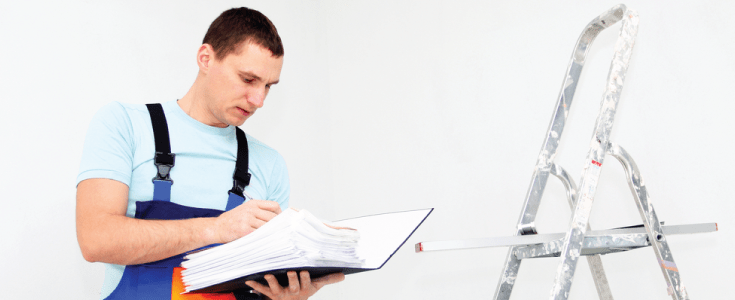A quick guide to the changes in UK ladder standards
31/05/2019
Since January 2018, new legislation has been gradually implemented in the UK which changes the way in which UK ladders are classified. These new standards were originally introduced to Britain at the start of 2018, but have been implemented amongst manufacturers since 2019 after an initial 12-month grace period. Now that this new legislation have become more widespread, we thought it worth giving you a quick rundown of what the changes entail.
What’s changing, and why?
All of the changes being made to ladder standards revolve around EN131. Essentially, EN131 is the European committee that deals with harmonised standards for portable steps and ladders, governing minimum safety standards. The European Commission was dissatisfied with the standards as they were, and the new changes are intended to make things simpler and safer, streamlining the existing categories and introducing more rigorous testing for ladders. The three main key points are:

1. Category changes
There were previously three standards for ladders in the UK. These comprised:
EN131 for trade and light industrial use
BS2037 / BS1129 Class 1 – heavy duty and industrial use
BS2037 / BS1129 Class 3 – domestic use
All this has now been simplified. As of now, there is a single standard separated into two classifications:
EN131 professional
EN131 non-professional
This not only makes things easier and simpler for consumers, but also continues to indicate that there are differences in performance requirements for each different type of ladder, so that customers can specify the ones that are best suited to their needs.
2. Additional testing on ladders and steps
Another key change introduced in the new legislation involves the tests that each ladder is put through before it goes to market. This covers changes to existing tests, as well as bringing in a raft of whole new ones. Additional requirements are now mandated for stability, slip tests, overall durability and relative strength in position of use. The main aim behind introducing all this is to cut down on the main causes of ladder accidents and falls from height, which remains one of the most serious and widespread causes of workplace injuries and deaths in the UK.
3. All existing purchases are still suitable for use (condition permitting)
Obviously, one of the top questions many people will have about the changes is: “how does this affect me?” Well, the changes largely affect manufacturers rather than end users; well maintained ladders in good condition can still be used, which means that you don’t have to worry about having to replace every one of your ladders just to stay up to speed with the latest changes. However, it’s good practice to specify the latest standards when ordering new ones, so it’s worth updating procurement policies at the earliest practical opportunity to be ready for EN131 implementation. As we touched on above, the changes to the legislation were instigated in January 2018, and have now been in full effect for manufacturers since 2019.
That means you can still expect the ladders you find right here at Browns to be at a market-leading standard, built for maximum safety, convenience and utility. We stock a huge range of ladders and access equipment, from stepladders and telescopic ladders all the way up to garden ladders. Feel free to browse them right here on our site, or give our friendly sales team a call on 01282 615517 to see how we can help!

